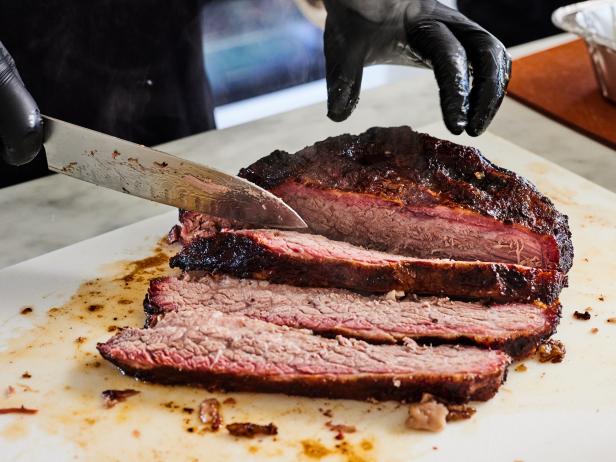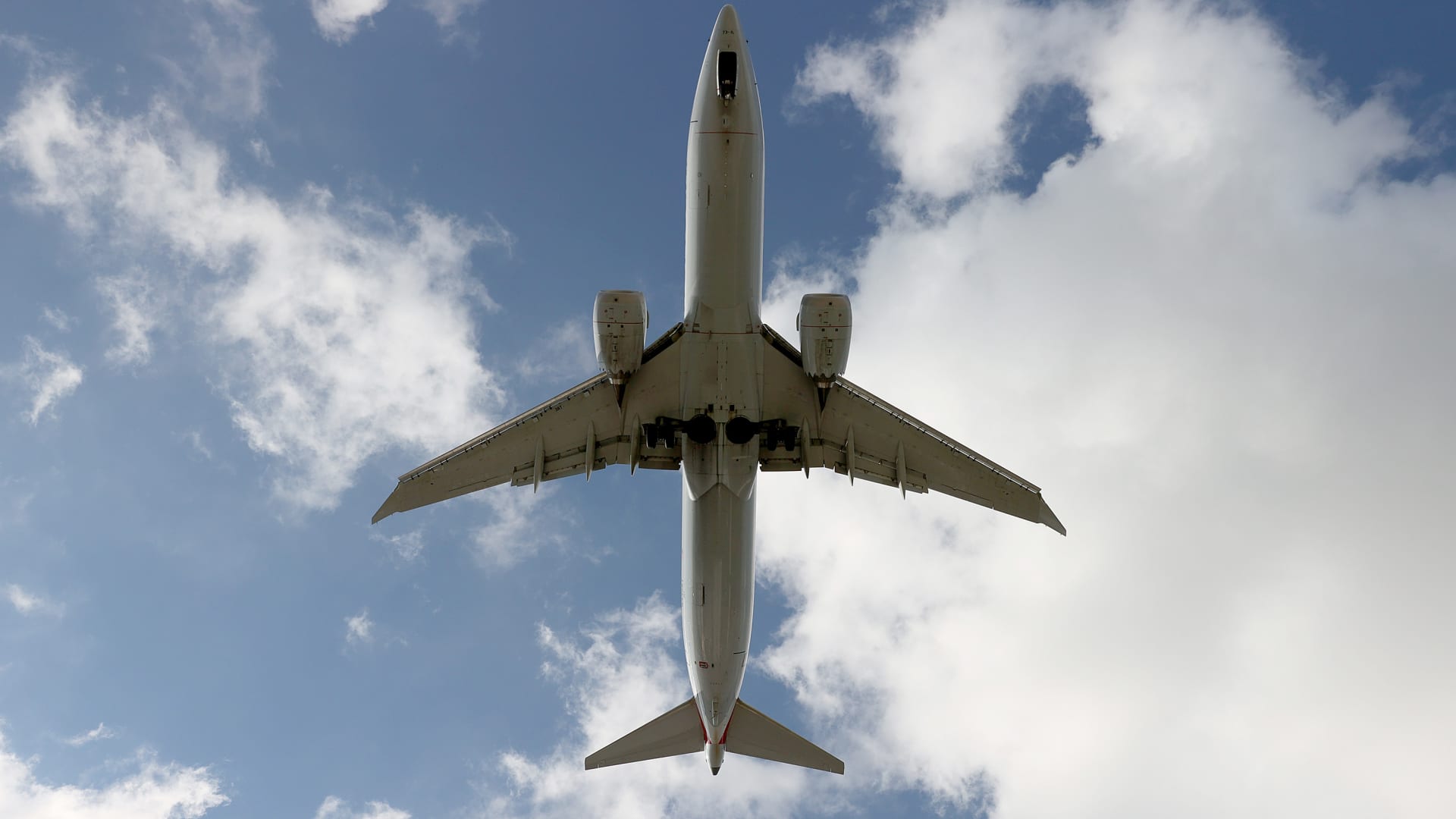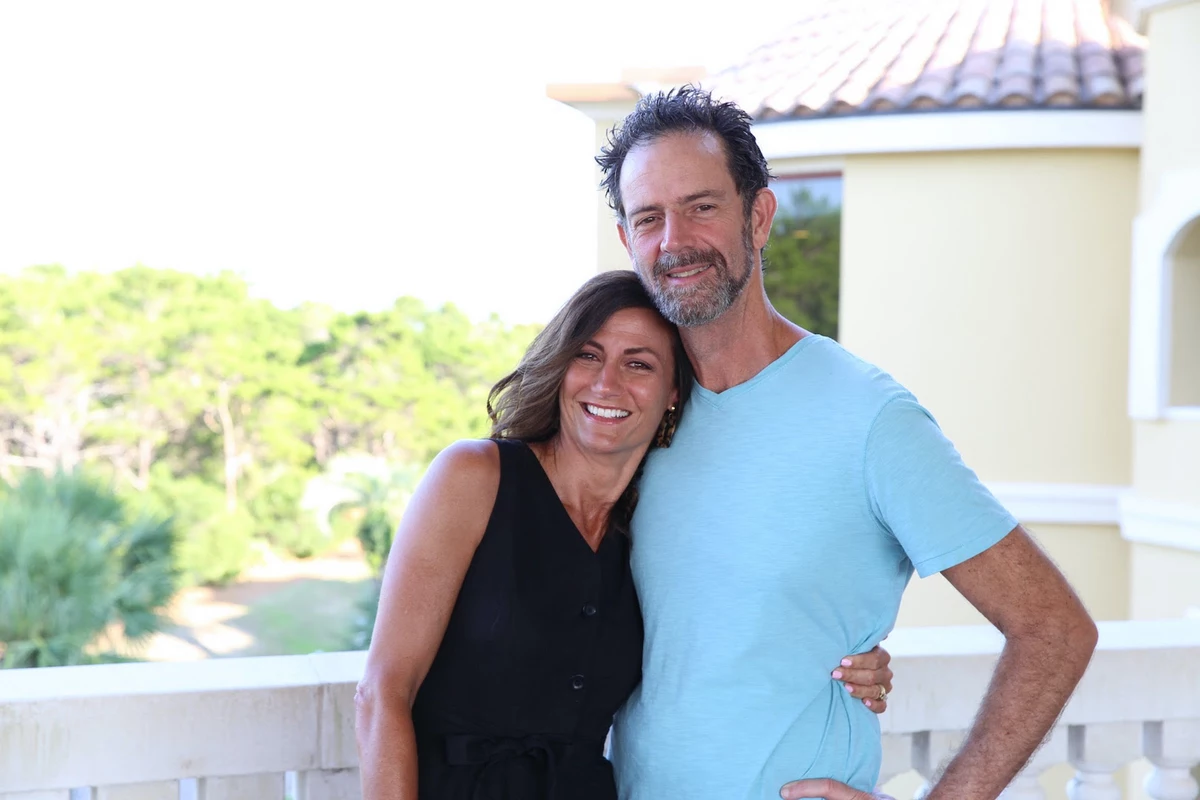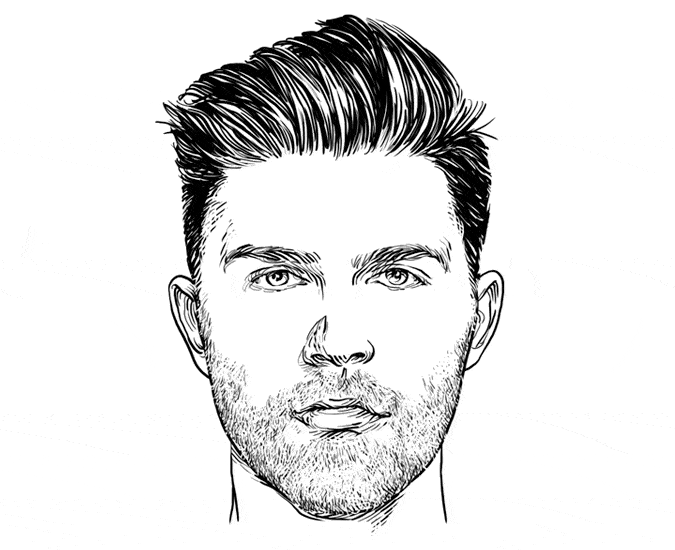
Recipe by Ginevra Iverson and How-To by T.K. Brady for Food Network Kitchen
There’s a reason pitmasters are so revered in the world of barbecue: Their craft is a labor of love. Whether they’re smoking ribs or a whole hog, the process is tedious and requires time and, more importantly, patience. While not everyone can make barbecue like a pitmaster, at-home pellet grills like those from Traeger, Camp Grills and Z Master aim to bring some of the joy of smoked meat to home cooks. We found these smokers making smoking meats — including a whole brisket and burnt ends — at home easier than one might think.
While smoking ribs, chicken and even fish can be a pretty intuitive cooking experience at home, smoking a large-format meat like brisket requires some additional information before getting started. For example, if burnt ends are what you’re after, it’s important to know you can’t make them without smoking a whole brisket first. It’s also important to understand brisket anatomy (flat vs tip) and some basics on how to butcher a brisket. Smoking the brisket might seem simple until you find it reaches a plateau temperature of 165 degrees F. (We have a solve for that.) Finally, carving up the brisket properly to make the burnt ends and reserve the flat for sandwiches and the like requires the right tools and some visuals.
All that said, armed with the right information, smoking a whole brisket can be a fun weekend activity. Plus, it produces a finished product that is sure to wow the guests you invite to a backyard feast that night. (Trust us, this serves up enough for a crowd.) Here’s what you need to know about smoking a whole brisket and burnt ends.
A brisket is made up to two parts known as the flat and the point (or the tip). The flat cut is the leaner part of the brisket and is also known as the first cut. If you’ve ever made a braised brisket in the oven, you’ve used a flat. (You can purchase smaller brisket flats from a butcher or grocery store, but these aren’t as appropriate for smoking.) The point of the brisket is the fattier cut and the part you’ll use to make burnt ends.
Briskets have a fatty side and a leaner side. The side with the layer of fat is known as the fat cap. The fat cap is usually around 1 inch thick and gets trimmed before smoking. You could ask your butcher to trim the fat for you, if you don’t feel comfortable doing it yourself.
When buying a brisket for your smoker, ask your butcher for an untrimmed or “packer” cut. This ensures you’ll get both parts of the brisket together. Keep in mind, this brisket will be somewhere between 12 and 16 pounds.
You’ll need to trim some of the fat from your brisket before you begin the smoking process. Too much fat on your brisket means you might not get enough smoke penetration in your meat and your flat won’t develop the bark (the combination of spices and smoke you see on a finished brisket) you’re craving. Using a sharp boning knife with the fat cap facing up, trim the fat and silver skin from the brisket leaving a 1/4-inch layer of fat. As you trim, also remove any hard pieces of fat found throughout the meat, as it will not render off during the cooking process.
You’ll leave the flat and point of the brisket intact for the first part of the cooking process, then separate the two to make burnt ends.
While you season your meat with either a spice rub or simply kosher salt and coarsely ground black pepper, preheat your smoker to 225 degrees F. (Make sure to follow the manufacturer’s instructions for how to light and operate your pellet grill.) When making brisket, we recommend using hickory or mesquite wood chips, as they have a stronger flavor that can stand up to the richness and fattiness of a brisket. (Pro tip: To keep your smoker looking good-as-new, you can line the drip tray and grease bucket with disposable liners prior to cooking.)
Once your smoker is preheate, insert a meat thermometer into the thickest part of your brisket and place it fat-side-up directly onto the grill grates. Close the lid and cook for 2 hours. After 2 hours, mist the brisket with an apple cider mixture in a spray bottle. Close the lid and cook, misting with the apple cider mixture every hour, until the internal temperature reaches 165 degrees F, about 6 hours more. If you find the internal temperature of your brisket cooking faster or slower than anticipated, don’t worry. Focus less on the 6-hour timeframe and use the internal temperature of your meat as your guide.
Once the brisket reaches 165 degrees F, it can plateau in the cooking process, also known as “the stall.” To get the brisket to continue cooking to the desired temperature of 203 degrees F, transfer the brisket to a rimmed baking sheet or cutting board then wrap the meat completely in aluminum foil or butcher paper. (Wrapping the meat prevents evaporation from the surface of the meat, which causes “the stall.”) Return the wrapped brisket to the grill and re-insert the meat thermometer. Close the lid and continue to cook until the internal temperature reaches 203 degrees F, about 3 hours.
At this point, the flat part of your brisket is done cooking and you’re ready to begin carving: After you’ve removed the brisket from the smoker and let it rest for 30 minutes, you’ll want to separate the brisket flat and point. Slowly separate the point cut (the thick fatty part) from the flat cut (the thinner, leaner part) by running a sharp knife through the fat that separates the two muscles. The flat cut can be sliced thinly with a sharp carving knife or chef’s knife and served immediately.
Now you’ll use the point to make burnt ends. Increase the pellet grill temperature to 275 degrees F and dice the point cut into 1/2-inch cubes. Transfer these cubes to a disposable aluminum tray or rimmed baking sheet lined with foil. Toss with your preferred BBQ sauce and return to the pellet grill. Close the lid and cook, tossing occasionally, until the meat is caramelized all over and dark around the edges, 1 1/2 to 2 hours.



























































